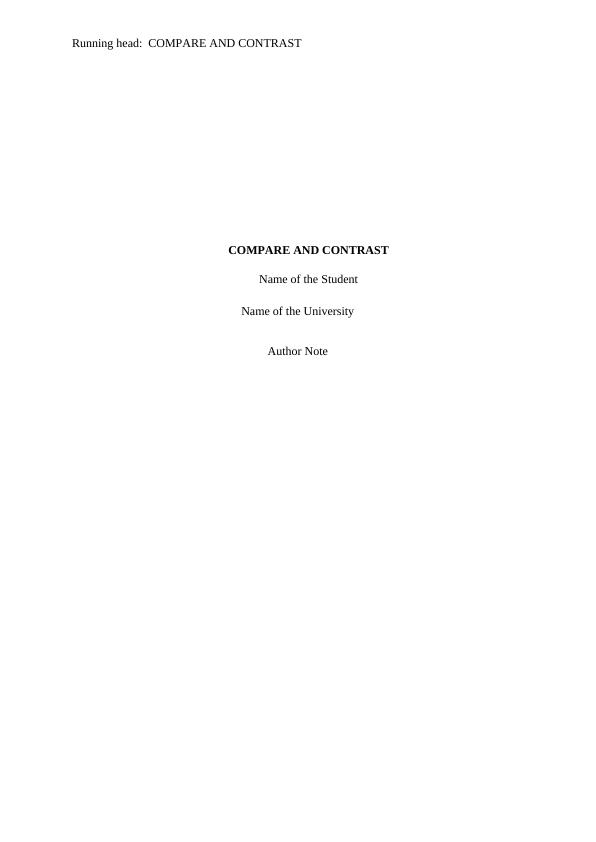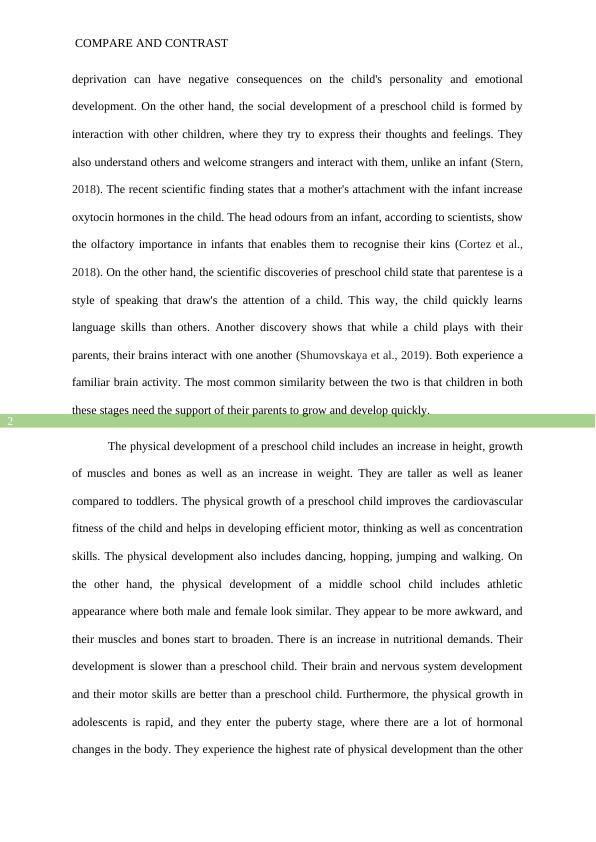Comparison between Social and Personality Development | Essay
Added on 2022-08-11
About This Document
Compare and contrast the following populations using meaningful examples for each stage of development below. Please describe how they are developmentally similar and different: Part A: The social and personality development of the infant versus the psychosocial, social, and moral development of the preschool child. Part B: The physical, intellectual development of the preschool child, the physical, intellectual/cognitive development of middle childhood, and the physical and cognitive development of the adolescent. When providing your response, use at least two (2) evidence-based research resources in the last three years that support recent scientific findings, citing at least two (2) specific examples of new discoveries in each of the areas above.
Comparison between Social and Personality Development | Essay
Added on 2022-08-11
End of preview
Want to access all the pages? Upload your documents or become a member.



